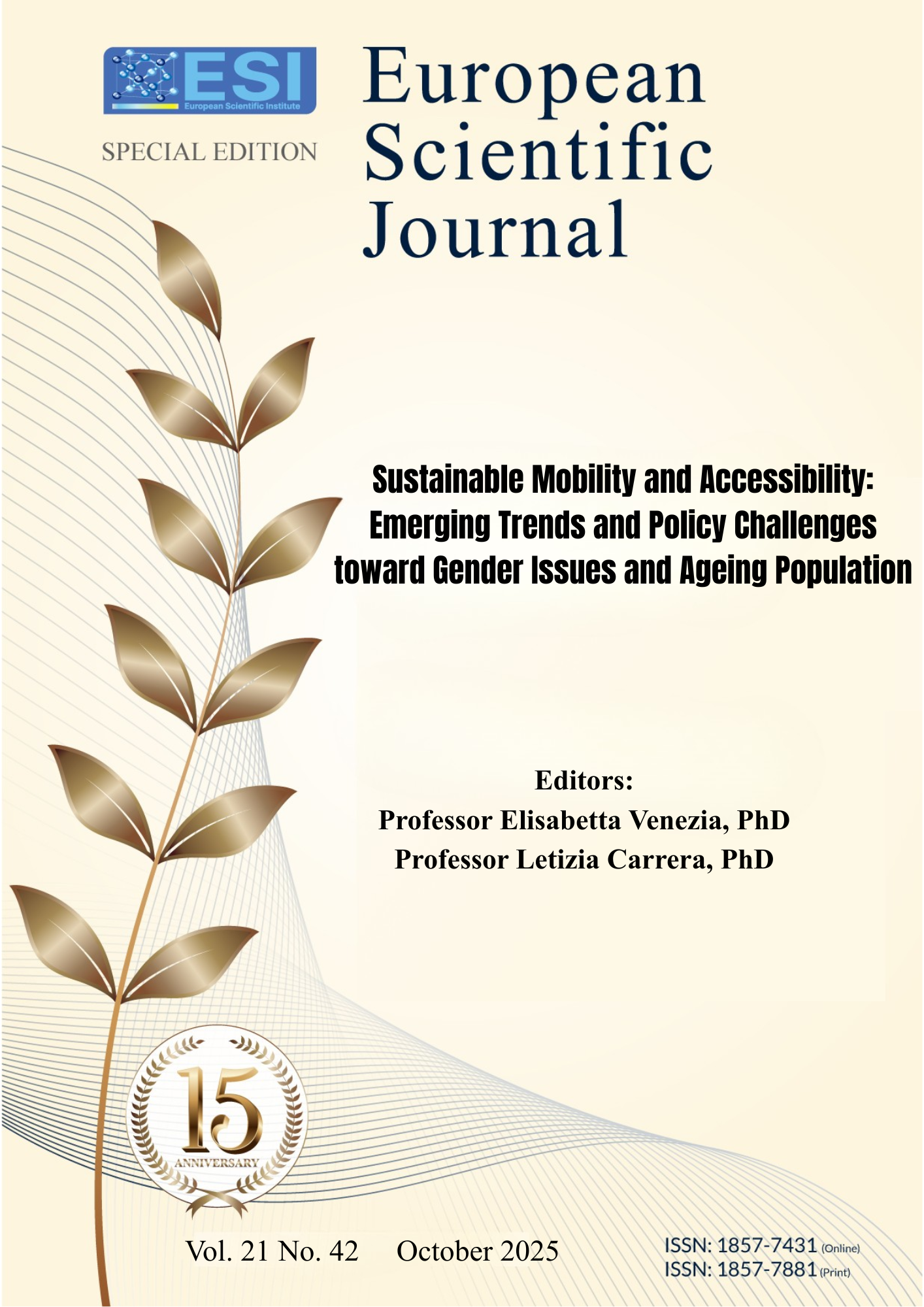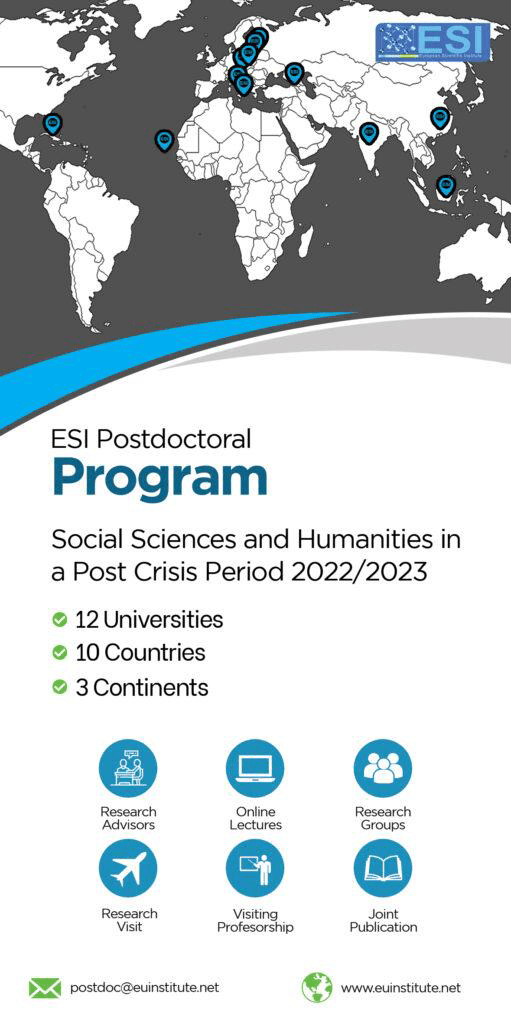Accessibility of Public Transport for Older People in Non-Urban Areas in Poland
Abstract
The accessibility of public transportation for elderly people in Poland's rural and peri-urban regions represents a pressing concern, particularly in light of the nation's aging demographic and the growing phenomenon of transport exclusion. This study delves into the myriad challenges faced by seniors in accessing reliable transportation, emphasizing the detrimental consequences of limited mobility, such as heightened social isolation and diminished access to essential services. The paper scrutinizes the underlying causes of transport exclusion, including the curtailment of bus and rail services, inadequacies in stop infrastructure, and vehicle fleets that fail to accommodate the needs of the elderly. Through an in-depth case study of the Konin Agglomeration, the disparities in accessibility are brought to the forefront, underscoring the imperative for systemic modernization of transport networks. Proposed solutions, such as the implementation of demand-responsive transport systems and comprehensive infrastructure enhancements, are explored as avenues to mitigate these issues. The article posits that by adopting integrated strategies and prioritizing accessibility, policymakers can significantly enhance the mobility and social inclusion of elderly citizens. Such measures not only improve the quality of life for this vulnerable population but also contribute to the broader goals of sustainable transport development and societal cohesion.
Downloads
Metrics
PlumX Statistics
References
2. Ciechanski, A. (2023). The Decline of Public Transport Networks in the Counties of the Low Beskids and Bieszczady and the Transport Exclusion of School Youth. Warszawa: Instytut Geografii i Przestrzennego Zagospodarowania im. Stanisława Leszczyckiego, Polska Akademia Nauk. Retrieved from https://www.igipz.pan.pl/tl_files/igipz/wydawnictwa/A_C_monografia/AC_final.pdf
3. Czarniecki, B. (2011). Spatial Aspects of Crime: A Method for Identifying Risk Factors in Urban Spaces. Białystok: Oficyna Wydawnicza Politechniki Białostockiej.
4. Czarnowski, T., Rostkowski, T., & Skwierawski, P. (2024). Not So Scary After All: How Cars Solve Poles' Problems. Warszawa: Warsaw Enterprise Institute. Retrieved from https://wei.org.pl/wp-content/uploads/2024/04/Nie-takie-auta-straszne-czyli-jak-samochody-rozwiazuja-problemy-Polakow.pdf
5. Dong, L., & Jianqiang, C. (2021, November 10). Transport and mobility needs for an ageing society from a policy perspective: Review and implications. MDPI, 8–9. Retrieved from https://www.mdpi.com/1660-4601/18/22/11802
6. Eurostat. (2024, February). Population structure and ageing. Retrieved June 29, 2024, from https://ec.europa.eu/eurostat/statistics-explained/index.php?title=Population_structure_and_ageing
7. Friman, M., Lattman, K., & Olsson, L. (2020). Public transport quality, safety. MDPI, 3–4. Retrieved from https://www.mdpi.com/2071-1050/12/9/3563
8. Gadzinski, J., & Goras, E. (2019). Report on the State of Polish Cities: Urban Transport and Mobility. Warszawa: Instytut Rozwoju Miast i Regionów. Retrieved from https://obserwatorium.miasta.pl/wp-content/uploads/2019/04/Transport-i-mobilność-miejska_raport_o_stanie_polskich_miast_Gadziński_Goras_OPM-IRMiR.pdf
9. Giezynski, T. (2009). New Trams in Poland. TTS Technika Transportu Szynowego, 9, 34–35.
10. Głowny Urzad Statystyczny. (2024, June 5). Post-Working Age Population per 100 People of Working Age. Retrieved June 27, 2024, from https://bdl.stat.gov.pl/bdl/metadane/cechy/2426
11. Hanzlik, M. (2011, March 24). Transport on Demand: Pilot Project - Milevsko Microregion. Preborov Official Municipal Website. Retrieved August 26, 2024, from https://www.preborov.cz/assets/File.ashx?id_org=13412&id_dokumenty=1098
12. Janous, V. (2011, February 4). In the Milevsko Area, On-Demand Buses Will Operate, Referred to as Radiobuses. iDNES.cz – Know More with Us. Retrieved August 26, 2024, from https://www.idnes.cz/ceske-budejovice/zpravy/v-okoli-milevska-budou-jezdit-radiobusy-autobusy-na-objednavku.A110204_150343_budejovice-zpravy_pp
13. Kaczorowski, J. (2019). Automotive Transport Enterprises in Poland: Development, Decline, and the Resulting Transport Exclusion. 5th Krakow National Transport Science Conference 'KOKONAT'. Kraków: Politechnika Krakowska.
14. Najwyzsza Izba Kontroli. (2020). Implementation of PPP Projects at the Operational Stage. Warszawa: Najwyższa Izba Kontroli.
15. TICKETING SYSTEM with Reservation for On-Demand Connections. (2011, March 24). Retrieved August 2024, from https://www.preborov.cz/assets/File.ashx?id_org=13412&id_dokumenty=1099
16. Raczynska-Bulawa, E. (2017). Adapting Public Transport Services to the Needs of People with Disabilities. Buses: Technology, Operation, and Transport Systems, 18(7–8), 36–39. Retrieved from https://yadda.icm.edu.pl/baztech/element/bwmeta1.element.baztech-fb1586fe-49ad-4d2f-b0f7-f8faa4e6f645
17. Rada Miasta Konina. (2022). Annex to Resolution No. 860 of the Konin City Council dated December 28, 2022. Konin: Urząd Miasta Konina. Retrieved August 28, 2024, from https://bip.konin.eu/index.php?d=uchwala_VIIIkad_szczegoly&kadencja=8&id=860
18. Rzadowe Centrum Analiz. Departament Analiz. (2023). Transport Exclusion in Poland – The Scale of the Problem. Warszawa: Kancelaria Prezesa Rady Ministrów RP. Retrieved from https://sejm.gov.pl/INT10.nsf/klucz/ATTD2VJL2/$FILE/z00292-o1_7.pdf
19. UM m. st. Warszawy. (2013, November 26). Low-Floor Buses – A Standard in Warsaw. Official Website of the City of Warsaw. Retrieved August 22, 2024, from https://um.warszawa.pl/-/autobusy-niskopodlogowe-to-standard-w-warszawie
20. Urzad Miasta Konin. (2010). Integrated Public Transport Development Plan for the City of Konin for 2010–2015. Konin: Urząd Miasta Konin. Retrieved August 27, 2024, from https://bip.konin.eu/bipredaktor/uchwaly_V/nr722_1.pdf
21. Urzad Miasta Konin. (2020). Supralocal Development Strategy for the Konin Agglomeration 2030. Konin: Urząd Miasta Konin. Retrieved from https://www.konin.pl/files/dokumenty_na_strone_2022/2022.08.01_Strategia_Aglomeracji_Konińskiej_do_konsultacji.docx.pdf
22. Zarzad Transportu Miejskiego. (2012, February). 15 Years of Low-Floor Buses. iZTM Monthly Magazine, 2(49), 12–15. Retrieved from https://www.wtp.waw.pl/wp-content/uploads/sites/2/2012/02/15_iztm249.pdf
23. Żakowska, L. (2005). How infrastructural changes can increase the quality of life and safety of senior road users. Viennese International Geriartic Congress FRALITY, Vienna, Austria 2005.
Copyright (c) 2025 Michal Bis, Lidia Zakowska

This work is licensed under a Creative Commons Attribution 4.0 International License.








